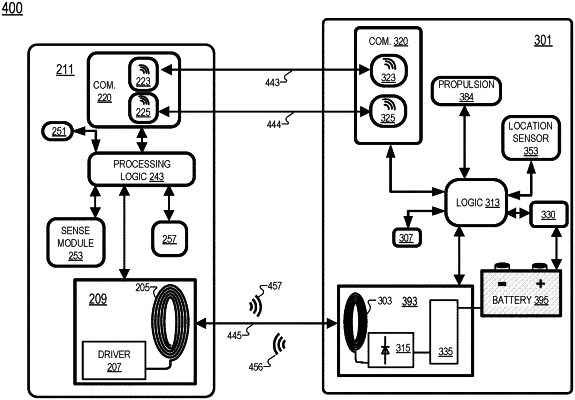| CPC B60L 53/12 (2019.02) [B60L 53/36 (2019.02); B60L 53/38 (2019.02); H02J 7/0071 (2020.01); H02J 7/00712 (2020.01); H02J 50/10 (2016.02); H02J 50/40 (2016.02); H02J 50/80 (2016.02); H02J 50/90 (2016.02); B60L 53/305 (2019.02); H02J 7/0048 (2020.01); H02J 7/005 (2020.01)] | 20 Claims |

|
1. An unmanned autonomous vehicle comprising:
a communication interface configured to receive charging station data from one or more charging stations by communicatively coupling directly to the charging stations via a first wireless communication channel;
a processing module to select a charging station by processing the charging station data; and
a wireless energy receiving module configured to communicatively couple to the selected charging station, wherein a receive charging coil of the wireless energy receiving module and a transmit charging coil of the selected charging station are configured to be communicatively coupled to each other via a second wireless communication channel, and wherein the wireless energy receiving module is configured to:
receive an initial wireless energy from the transmit charging coil via the second wireless communication channel, wherein the initial wireless energy includes at least an authentication challenge signal;
in response to the authentication challenge signal, measure electrical attributes comprising a battery current supplied to charge a battery of the unmanned autonomous vehicle;
generate an authentication response signal based on the measured electrical attributes; and
transmit the generated authentication response signal to the transmit charging coil.
|